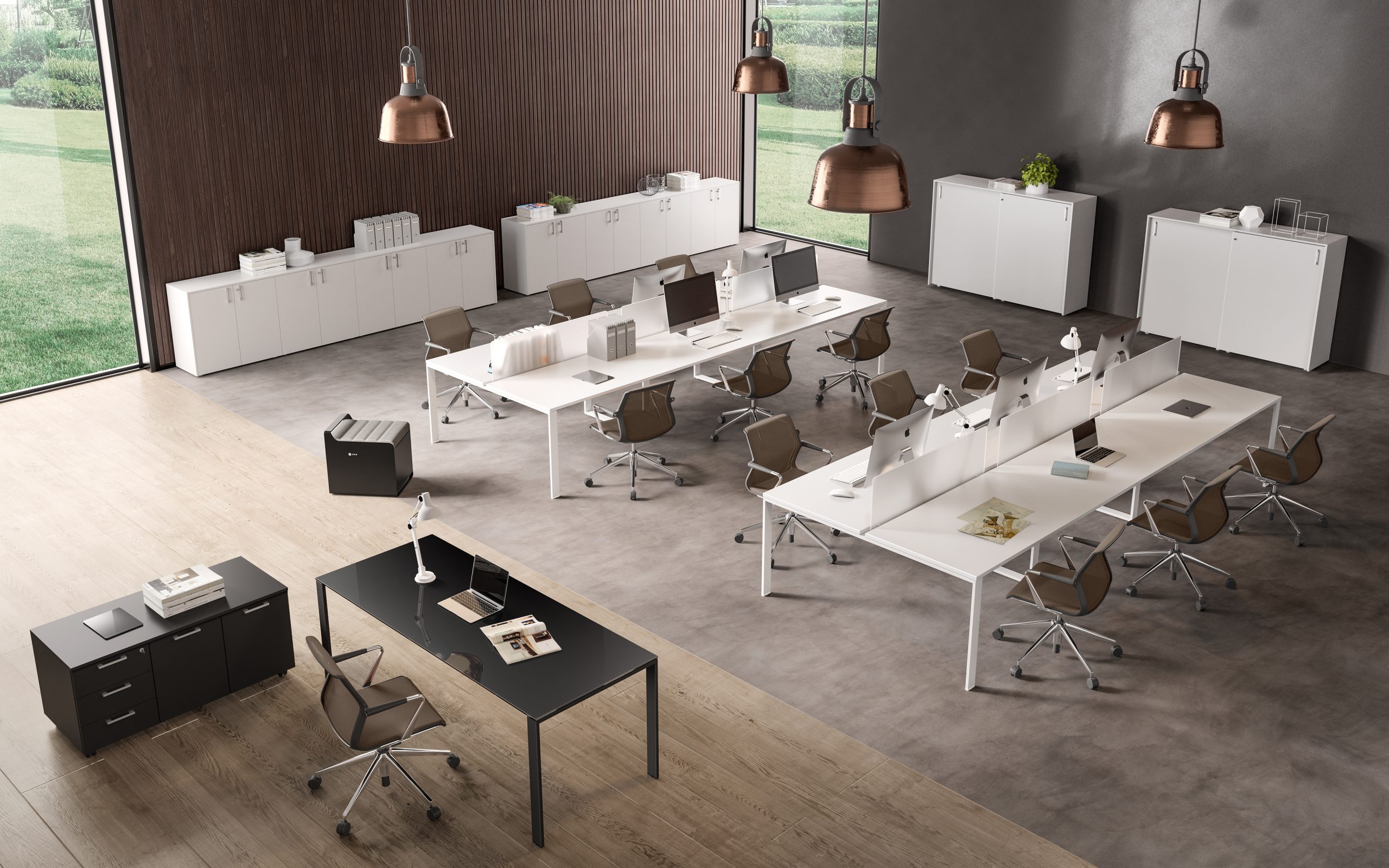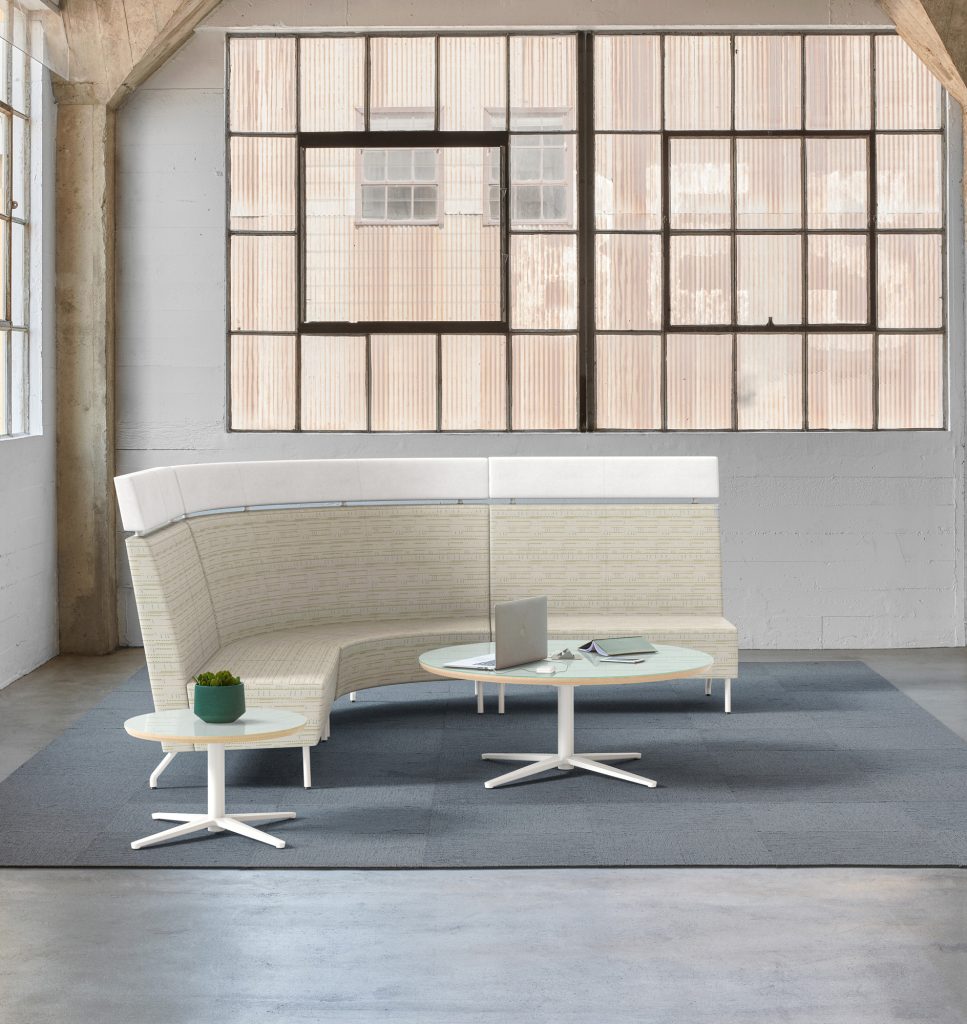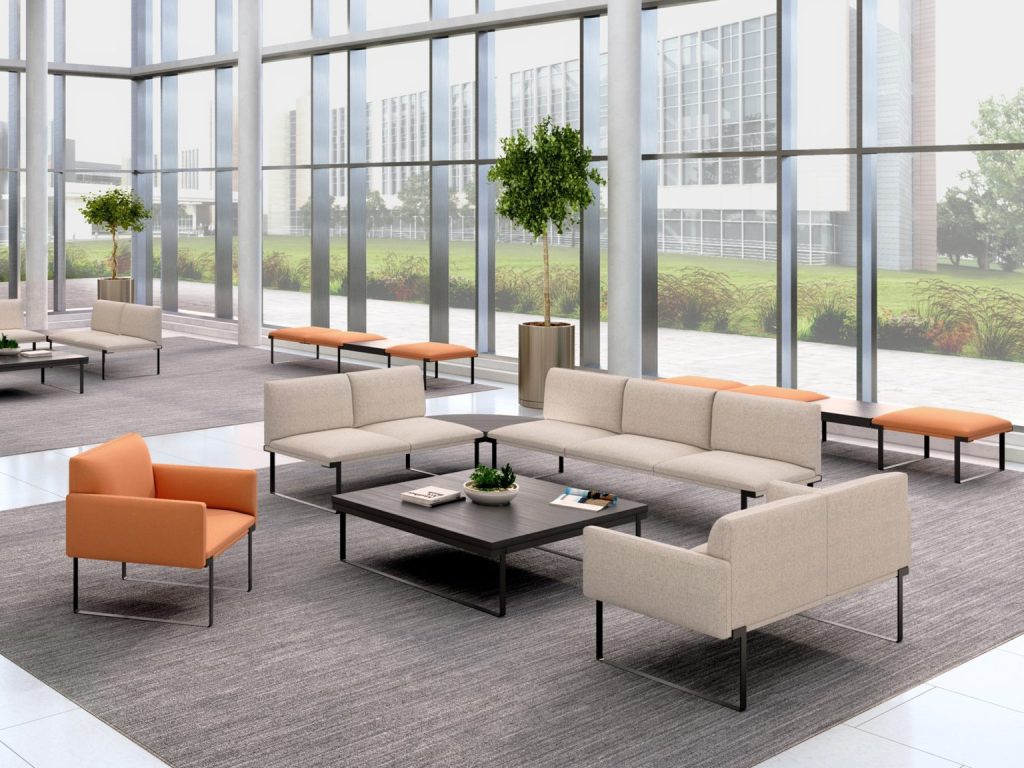
In the evolving landscape of modern workplaces, open concept workstations have emerged as a popular trend. The days of cubicles and closed-off offices are gradually fading, making way for a more collaborative and flexible approach to workspaces. Open concept workstations are designed to encourage communication, creativity, and a sense of community among employees.
However, the question remains: Is an open concept workstation the right fit for you or your organization? In this article, we’ll delve into the benefits, considerations, and factors to help you decide if an open concept workstation aligns with your needs and preferences.
What is an Open Concept Workstation?
An open concept workstation is a workplace design characterized by a layout that minimizes or eliminates barriers like cubicles and walls. It often involves shared desks or long tables where employees from various teams or departments work alongside each other. The goal is to foster collaboration, enhance communication, and create a more inclusive and transparent work environment.
Benefits of Open Concept Workstations
Enhanced Collaboration and Communication: One of the primary advantages of an open concept workstation is the ease of collaboration it facilitates. With fewer physical barriers, team members can easily communicate, share ideas, and collaborate on projects, promoting a culture of openness and teamwork.
Flexibility and Adaptability: Open concept workstations are often designed with flexibility in mind. They can be easily rearranged to accommodate changes in team sizes or project requirements. This adaptability ensures that the workspace remains functional and efficient as the needs of the organization evolve.
Cost-Efficiency: Open concept workstations generally utilize space more efficiently, allowing organizations to accommodate more employees in a given area. This can lead to cost savings in terms of real estate and construction, making it an attractive option for businesses looking to optimize their budget.
Promotes Equality and Inclusivity: The absence of hierarchical partitions promotes a sense of equality among employees. Everyone, regardless of rank, shares the same workspace, promoting a feeling of unity and inclusivity within the organization.
Encourages Innovation and Creativity: The open and collaborative nature of this layout encourages the free flow of ideas and creativity. Employees can draw inspiration from each other and easily seek feedback, fostering an innovative work environment.
Improved Employee Satisfaction: Many employees appreciate the communal atmosphere of open concept workstations. The increased interaction and sense of belonging can lead to higher job satisfaction and employee engagement.
Considerations Before Embracing an Open Concept Workstation
Privacy Concerns: While open spaces encourage collaboration, they may lack the privacy that some employees need for focused work or confidential discussions. Addressing this concern by providing designated quiet areas or meeting rooms is crucial.
Potential Distractions: Open layouts can be noisy and prone to distractions. Employees need to develop effective strategies to maintain focus and productivity in a bustling environment.
Personal Work Styles: Consider individual work preferences. Some employees thrive in open, social environments, while others might feel more comfortable and productive in a quieter, enclosed space. Offering a mix of workstations to cater to different work styles is ideal.
Management and Oversight: An open concept workspace may require more proactive management to ensure that teams are effectively collaborating and staying on task. Managers should find a balance between a collaborative environment and maintaining productivity.
Ergonomics and Comfort: Adequate seating, ergonomic furniture, and a comfortable layout are essential to ensure the well-being and satisfaction of employees working in an open concept space.
Is an Open Concept Workstation Right for You?
To determine if an open concept workstation is right for you or your organization, consider the following factors:
Company Culture: Assess your company’s values, culture, and communication style. If collaboration, transparency, and innovation are at the core of your culture, an open concept workstation could align well with your organizational values.
Nature of Work: Evaluate the nature of tasks and projects your teams handle. If your work often requires collaboration, brainstorming, and frequent interaction, an open concept layout can enhance productivity and creativity.
Employee Input and Feedback: Involve your employees in the decision-making process. Gather their feedback and preferences regarding workspace design. Understanding their needs can help tailor the workspace to accommodate various work styles and preferences.
Budget and Space Constraints: Consider your budget and available space. An open concept layout can be cost-effective and space-efficient, making it a suitable option for smaller organizations or those with limited resources.
Hybrid Approach: Explore a hybrid approach that combines open concept workstations with designated private spaces. This approach offers the benefits of collaboration while still addressing the need for privacy and focused work.
Trial Period: If possible, implement a trial period where employees can experience the open concept setup. Gather feedback during this period to make informed decisions about the long-term suitability of the layout.
Where to Start?
Flexible Workstations
- Adjustable desks or standing desks that can be easily customized to suit individual preferences and tasks.
- Modular desks that can be rearranged to create various collaborative configurations.
Collaborative Tables
- Long communal tables that encourage teamwork and idea sharing.
- Round or oval tables that promote inclusivity and facilitate group discussions, such as Movado Interior’s Flirt Occasional Table

Ergonomic Chairs
- Ergonomically designed chairs that provide comfort and support during long work hours.
- Task chairs with adjustable height, lumbar support, and swivel capabilities.
Collaborative Seating
- Lounge chairs and sofas to create casual meeting areas and comfortable collaboration zones.
- High-backed chairs or booths that offer privacy within the open space for focused work or discussions.

Mobile Whiteboard or Flipcharts
- Portable whiteboards or flipcharts that can be easily moved around for impromptu brainstorming sessions.
- Wall-mounted whiteboards for jotting down ideas and concepts during team meetings.
Storage Solutions
- Open shelving units or bookcases for organizing and displaying work-related materials and resources.
- Lockable storage cabinets or drawers to secure personal belongings and sensitive documents.
Reception and Welcome Area Furniture
- Reception desks or counters with comfortable seating for visitors and guests.
- Stylish chairs and coffee tables to create a welcoming atmosphere in the reception area.
In Conclusion: Finding the Right Balance
An open concept workstation is a modern and dynamic approach to workspace design that offers numerous benefits. However, its effectiveness depends on various factors, including your company’s culture, work requirements, and employee preferences. Striking the right balance between collaboration, privacy, and individual work styles is key to creating a workspace that fosters productivity, creativity, and employee satisfaction.
Ultimately, the decision to embrace an open concept workstation should align with your unique organizational needs and goals, ensuring a workspace that promotes growth, engagement, and success. Feel free to contact our Movado Interiors team for years of expertise in interior design and discover more Movado furniture that can elevate your office space! Reach us at info@movadointeriors.com for more information.
